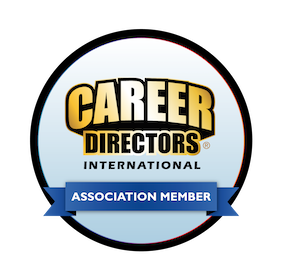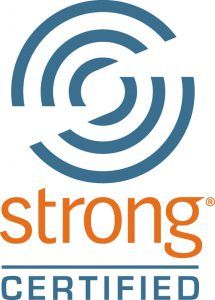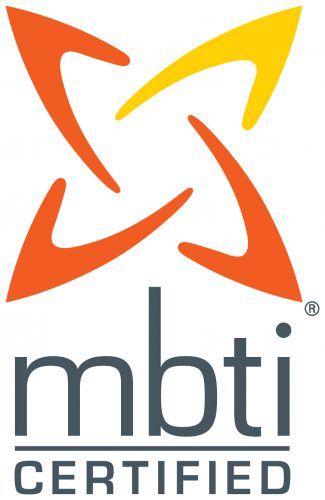On the Blog

The Myth of Upward-Only Growth For a long time, career advice came with a single metaphor: climb the ladder. Each rung was supposed to represent progress—higher title, higher pay, higher stakes. But here’s the truth: a lot of people climb that ladder only to realize it’s leaning against the wrong wall. At RYD Career Coaching , we work with mid-career professionals who followed the “right” path—only to end up overworked, burned out, or quietly unfulfilled. They did what they were supposed to do. Now they’re ready to figure out what they want to do. Because traditional career ladders don’t leave room for what many of us need: flexibility, values alignment, and the freedom to evolve. You don’t have to chase promotions that don’t serve you. You don’t have to prove your worth by staying in a role that drains you. And you definitely don’t have to apologize for wanting something different. Whether you’re feeling stuck in middle management, itching for a career change, or just starting to question what success even means—you’re not broken. You’re just outgrowing the story you were told. Let’s rewrite it. Where the Ladder Analogy Breaks Down The idea of the corporate ladder has been around for decades—and for some people, it works. But for many professionals, especially those navigating career changes in their 30s, 40s, or 50s, that metaphor starts to feel narrow and outdated. Here’s why: It doesn’t account for detours, pauses, or value shifts. Life isn’t linear. Careers aren’t either. You might step back to care for family, take a lateral move to escape a toxic environment, or pursue a new path that aligns better with your values. None of those decisions make you less driven—they make you human. Yet the ladder model treats these shifts like setbacks. That mindset is harmful and inaccurate. It treats burnout like a badge of honor. The ladder glorifies constant upward motion: more hours, more stress, more responsibility. But if each rung brings you more pressure without more fulfillment, is it really progress? We work with clients who’ve checked all the boxes—title, salary, performance reviews—and still feel empty. That’s not failure. That’s a sign that the system wasn’t built for sustainability. It ignores the messy, meaningful middle. There’s real growth in staying still long enough to know yourself. In deepening your skills. In redefining success on your terms. Sometimes you don’t need another rung. You need a wider platform. Signs You’ve Outgrown the Current Path You don’t have to hate your job to know it’s not working. Sometimes the signs are subtle—a slow erosion of energy, a growing sense that you're no longer learning, or the quiet dread that starts creeping in on Sunday night. If you’re wondering whether it’s time for a change, here are some common signals we see in coaching clients who’ve outgrown their current career path : You feel bored, even when you’re busy. Your calendar might be full, but you’re running on autopilot. You’re executing tasks, attending meetings, getting things done—but there’s no real spark. No growth. No curiosity. That’s a red flag. You’re performing well, but it doesn’t feel like progress. You’re meeting goals, getting positive feedback, maybe even earning promotions. And still… something’s off. This kind of “empty achievement” is incredibly common among mid-career professionals, and it often points to values misalignment. You feel like you’re shrinking to fit the role. You’ve adjusted. You’ve compromised. You’ve let go of creative ideas or ways of working that once felt important to you. And now? You feel like a watered-down version of yourself at work. That’s a problem worth addressing. You catch yourself wondering, “What else is out there?” Even if it’s just a passing thought between Zoom calls, that question matters. It’s often your first clue that you’re ready for something different—whether that’s a new role, a new industry, or a whole new direction. Alternatives to Linear Advancement For a long time, the only direction that seemed to count in a career was “up.” But up isn’t always the right move—and it’s definitely not the only one. In our work with mid-career professionals, we often help clients discover that the most fulfilling paths are the ones that break from tradition. Here are three alternatives to climbing a ladder that still move you forward in meaningful ways: Lateral moves A lateral move—switching roles or departments at the same level—can open up fresh challenges, better culture, or a healthier team dynamic without the pressure of a title jump. It’s one of the most underappreciated strategies for long-term career growth, especially when you’re looking to pivot or protect your energy. Pivoting to new industries or functions If your skills are transferable—and they probably are—you’re not stuck in one sector forever. We help clients identify adjacent industries or job families where their experience still holds weight but the environment offers a better fit. Think supply chain to sustainability, or project management to people ops. This is where strong career storytelling makes all the difference. Growth through deepening Sometimes, growth doesn’t mean doing something new—it means doing something deeper. That might look like building mastery in your current field, mentoring others, or finally prioritizing work-life balance after years of overextending. These kinds of changes aren’t always visible on a resume, but they’re powerful. How to Figure Out What “Success” Means to You If your version of success no longer matches the one you started out with—good. That means you’re paying attention. The most meaningful career shifts we’ve seen at RYD start not with a job title or industry, but with a better question: What does success look like for me now? Here’s how to start answering that: Use journal prompts to go deeper You don’t need a five-year plan—you need five honest answers. Try these prompts to reconnect with your own voice: What part of your current work gives you energy? What drains it? When do you feel most confident or proud in your role? What would you keep doing even if you didn’t get paid for it? If your answers feel scattered, that’s okay. Patterns emerge over time—and clarity follows action. Ask better coaching questions You don’t have to figure this out alone. Our clients often uncover new possibilities just by talking it out in a space where they don’t have to perform. Coaching creates room for the “what ifs” you’ve been avoiding. Some of our favorites: What would you want if no one was watching? What kind of support would help you move forward? Who do you admire—and why? These aren’t surface-level questions. They’re invitations to take yourself seriously. Make values-driven decisions You can’t build a sustainable career on someone else’s definition of success. When you anchor your goals in your values—things like autonomy, connection, creativity, or stability—you’ll make choices that lead to alignment, not exhaustion. This is the heart of the work we do at RYD Career Coaching : helping you realign your career path with who you are now, not who you were when you chose your major or said yes to that first job. Your Career Should Work for You—Not the Other Way Around You don’t need to keep climbing just because the ladder is there. If your current path feels misaligned, unsustainable, or just flat-out wrong—it’s not too late to change direction. In fact, it’s one of the most courageous and strategic moves you can make. At RYD Career Coaching , we work with mid-career professionals who are ready to stop following someone else’s idea of success and start defining their own. Whether you’re craving more purpose, more flexibility, or just a job that feels like it fits, we can help you figure out what’s next—and how to get there without burning out in the process. Your career isn’t stuck. You’re not too old. And you’re definitely not behind. You’re ready to take the next step—your step. Let’s figure out what that looks like.
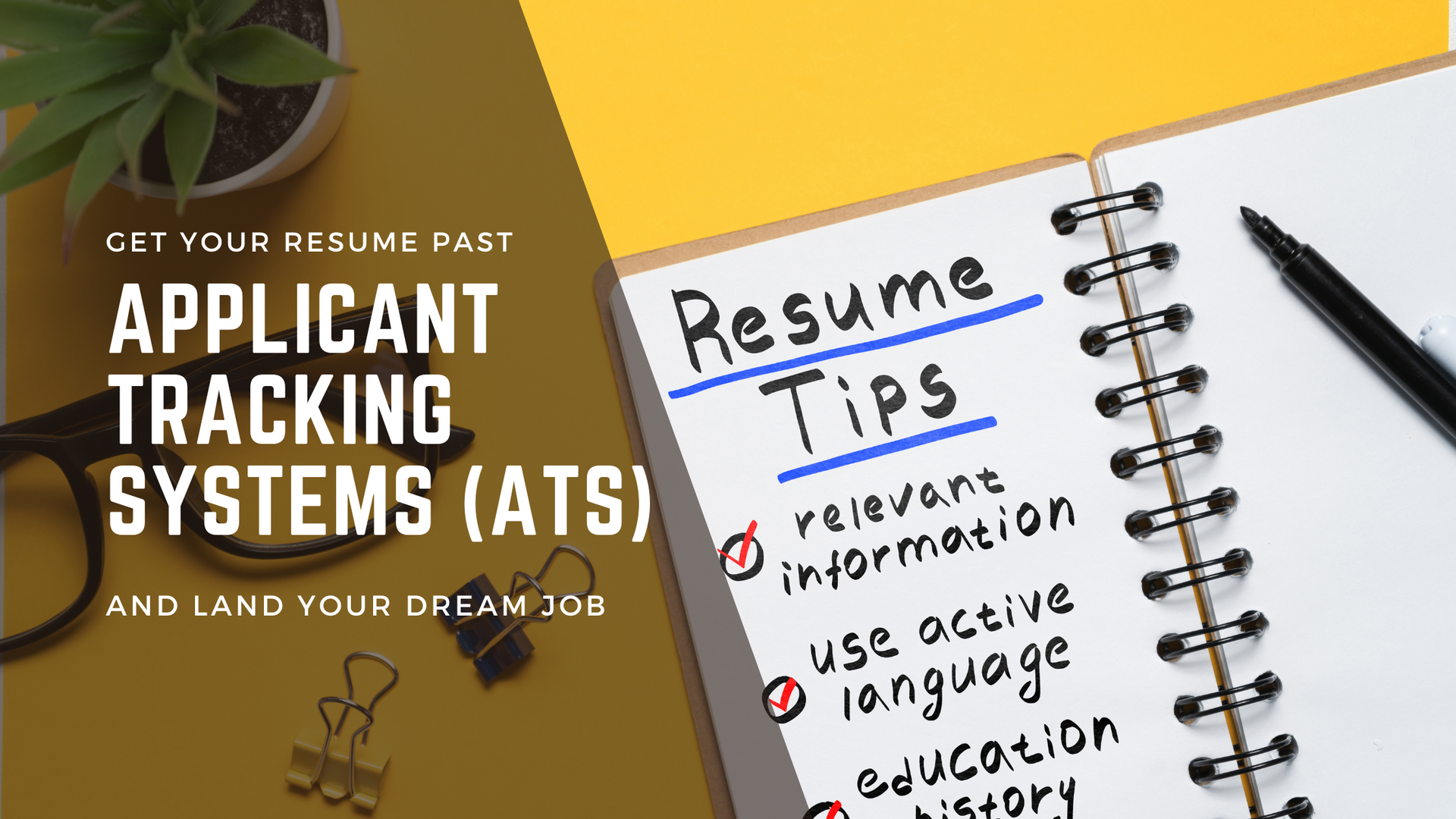
Alright, let’s talk about the modern-day job hunt nightmare: the Applicant Tracking System, or ATS for short. Picture this (or potentially remember it): you’ve crafted the perfect resume, filled with all your stellar achievements, and sprinkled it with some clever wordplay. You hit send, and then...nothing. Crickets. No call, no email. Why? Because your resume got lost in the ATS abyss. But don’t worry—I’ve got you covered on how to navigate this digital minefield and get your resume seen by real human eyes. 1. Keywords are Your New Best Friend Okay, let’s break this down. An ATS is like a picky eater at a salad bar; it’s only looking for specific ingredients (keywords). The trick here is to feed it exactly what it wants. This means you’ve got to use the right keywords that match the job description. Pro tip: Go through the job listing with a fine-tooth comb. See those words that keep popping up? Use them. But, please, don’t just stuff them in randomly—make them flow naturally in your resume. For example, if the job description mentions "project management" three times, you better believe that’s a keyword you want to include (assuming you have experience, of course!). 2. Keep the Formatting Simple (and I Mean Really Simple) Look, I get it. You want your resume to stand out, and that’s great! But intricate layouts and fancy graphics? Not ATS-friendly. Stick to the basics of font size, bold, and italics, and keep the formatting simple—no columns, no text boxes, and no graphics UNLESS you know the workarounds (that's where professional resume writers shine). The golden rule: If it looks like something out of a graphic design magazine, the ATS will likely choke on it. Stick to a classic, clean format. 3. Check Your File Format If you're uploading into an ATS, you do actually need to make sure you're uploading in one of the compatible file formats. There's a lot of talk out there about how an ATS can't read a pdf, which is simply untrue. The formatting (images, graphs, columns) are what confuse the ATS, not the file type. 4. Customize, Customize, Customize! Here’s the biggie: customization. Don’t just fire off the same resume to every job opening like it’s a one-size-fits-all sweater. Tailor each resume to match the job description. Yes, it takes more time, but it’s worth it. Remember, your goal is to make your resume scream “perfect fit” to both the ATS and the human recruiter on the other side. 5. Keep It Real with Your Skills This isn’t the time to embellish. If the job description asks for advanced proficiency in Python and the closest you’ve come to Python is owning a pet snake, it’s best to leave it off. The ATS can be sneaky—some even use skills tests to verify your knowledge. Honesty is the best policy here; align your actual skills with what the job requires. Final Thoughts: Play the ATS Game, But Don’t Forget the Humans Remember, getting through the ATS is just the first hurdle. Your ultimate goal is to impress the real-life human beings who will actually read your resume. So while it’s important to optimize for the system, don’t lose your unique voice. Inject a bit of your personality where it counts—because at the end of the day, people hire people, not robots! So, there you have it! Follow these tips, outsmart those pesky ATS, and you’ll be well on your way to landing that dream job. Happy job hunting!
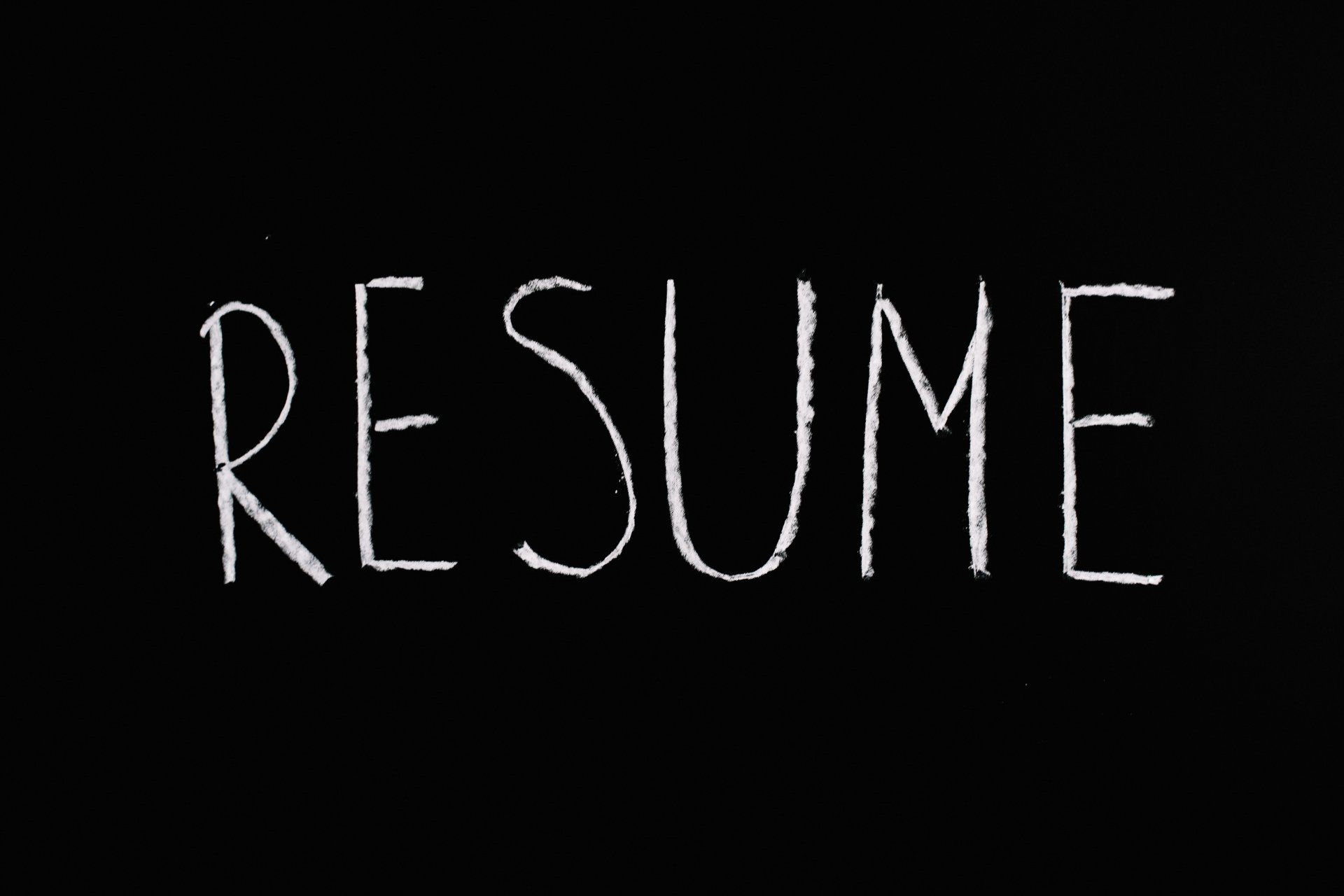
In today's rapidly evolving job market, the tools we use to present ourselves professionally are also undergoing transformations. As we step into 2023, understanding resume tips and the modern resume format is more crucial than ever. Gone are the days when a basic chronological list of past jobs sufficed. Instead, the landscape now demands strategically crafted documents tailored to specific roles—documents that can navigate the sophisticated ATS (Applicant Tracking Systems) algorithms and catch the discerning eyes of recruiters. But what does an effective resume look like this year? How does one optimize the resume keywords for ATS optimization without compromising the genuine narrative of their career journey? Furthermore, with the rise of digital resumes and platforms that host online portfolios for job applications, how can job seekers ensure they're maximizing their first impression? Whether you're fresh into the workforce or a seasoned professional looking to make a switch, this guide will delve deep into the job application 2023 trends, offering invaluable insights on creating a resume that stands out in the crowd. The Fundamental Principles of a Modern Resume Navigating the job application 2023 landscape requires not just awareness but also adeptness in the foundational principles of modern resume crafting. While the essence of a resume remains the same—a portrayal of your professional journey—the methods of its presentation have evolved. Here's what's at the core of a winning resume this year: Clarity and brevity: The 6-second rule: Recruiters, inundated with applications, often spend just six seconds on an initial scan of a resume. This calls for clear, concise content that gets straight to the point. A clutter-free design and strategic placement of key achievements can make all the difference in these crucial seconds. Tailoring content to the specific job and industry: Generic resumes are a thing of the past. In 2023, tailoring your resume's content to the specifics of the job description is not just recommended—it's essential. Incorporating resume keywords from the job listing not only increases your chances with ATS optimization but also demonstrates your genuine interest and alignment with the role. The rise of ATS (Applicant Tracking Systems) and keyword optimization: More than 90% of large companies use ATS software to screen resumes, making it vital to ensure your resume is ATS-friendly. This involves using relevant keywords naturally, maintaining a simple format, and avoiding graphics that the system might not read. By firmly grounding your resume in these principles, you create a foundation that can then be adorned with your unique experiences, skills, and aspirations—making sure your application isn't just another in the pile, but a standout testament to your professional journey. Resume Components and Structure A stellar resume is like a well-constructed puzzle, with each piece fitting seamlessly to create a cohesive picture of your professional persona. While certain elements of a resume are timeless, the modern resume format in 2023 calls for a nuanced approach. Let's break down these components: Contact Information: While this may seem straightforward, it's essential to keep up with the times. Apart from the traditional name, phone number, and email, consider adding a link to your LinkedIn or other professional online portfolios. However, be cautious of including personal details that aren't relevant or could lead to bias, like marital status or date of birth. Objective or Summary: Gone are the lengthy, generic objectives. Instead, craft a concise pitch or summary that aligns with the specific role you're applying for. Tailor it with resume keywords that resonate with the job description, emphasizing your eagerness and suitability for the position. Experience: It's not just about listing your past roles. In 2023, it's all about showcasing tangible achievements and how you made a difference. Use quantifiable metrics where possible, and format this section in a way that highlights your most significant accomplishments. Education: Detail your academic background, but also spotlight any additional training or certifications relevant to the job. With the rise of online courses and alternative education paths, don't hesitate to include these if they boost your qualifications. Skills: Distinguish between hard and soft skills, ensuring that the most pertinent ones are easily noticeable. Given the emphasis on ATS optimization, make sure to incorporate skills that match the job listing. Additional Sections: Modern resumes often go beyond the basics. Whether it's projects you've spearheaded, languages you speak, or volunteer work you're passionate about, these sections provide a fuller picture of who you are both professionally and personally. Crafting a resume is a balancing act—between presenting comprehensive information and maintaining brevity, between showcasing your individuality and adhering to industry standards. By understanding and effectively organizing these components, you'll be well on your way to creating a document that captures attention and opens doors. Design and Format In the digital age of 2023, a resume isn't just a compilation of your experiences—it's also a reflection of your personal brand. While the content reigns supreme, the design and format you choose can significantly impact a recruiter's first impression of you. Here's how to ensure your resume's design speaks as loudly as its content: Clean layouts: A cluttered resume is a recruiter's nightmare. Embrace white space, use consistent spacing, and stick to a layout that directs the eye naturally from one section to the next. The goal is to enhance readability, making it effortless for someone to grasp your professional journey within a few seconds. Use bullet points for clarity and brevity: Long paragraphs can be daunting and often overlooked. Bullet points break down information into digestible bits, allowing for quicker absorption of your achievements and skills. Appropriate colors and fonts: While it's tempting to use vibrant colors and fancy fonts to make your resume stand out, it's crucial to remember that less is often more. Stick to a maximum of two complementary colors (preferably subtle) and choose fonts that are professional and easily legible. Keep in mind that some ATS systems may not process intricate fonts correctly. Digital considerations: Considering that most job applications are online, factor in digital nuances. This includes using universally accepted file types like PDF, ensuring hyperlinks (to portfolios or LinkedIn profiles) are active and accessible, and avoiding headers or footers that might get overlooked by ATS. In 2023, mastering the modern resume format is as much about aesthetic appeal as it is about content relevance. A well-designed resume not only captures attention but also ensures that the content within is easily navigable, maximizing the chances of your application leaving a lasting impression. Common Resume Mistakes to Avoid No matter how accomplished one's career, a few resume missteps can tarnish the impression made on potential employers. As we navigate the intricacies of the job application 2023 landscape, it's crucial to be aware of pitfalls that might undermine the effectiveness of your resume. Here's what to steer clear of: One-size-fits-all approach: Tailoring your resume for each job application isn't just recommended—it's imperative. A generic resume can come off as impersonal and disinterested, lacking the specific resume keywords that show alignment with the job's requirements. Overlooking ATS optimization: In the digital age, bypassing the ATS (Applicant Tracking Systems) can cost you the job even before a human sees your application. Using complex designs, incorrect file types, or missing out on critical keywords can result in your resume being filtered out. Being vague about achievements: Using generic phrases like "responsible for" without quantifying results or detailing specifics can dilute the impact of your accomplishments. Instead, highlight achievements with metrics, giving a clearer picture of your contributions. Grammatical and typographical errors: While it may seem trivial, typos or grammatical mistakes can be detrimental, portraying a lack of attention to detail. Always proofread multiple times or use professional services to ensure your resume is impeccable. Overemphasis on duties, not impact: Instead of just listing job duties, focus on the impact you made in each role. How did you contribute to the company's growth or solve a pressing issue? This shift in presentation can make your application more compelling. Outdated or irrelevant information: While your first job or that course you took a decade ago might be dear to you, it might not be relevant to the job you're applying for now. Be discerning in what you include, focusing on recent and pertinent experiences. Crafting a standout resume is as much about what you include as what you sidestep. By being aware of these common missteps and actively avoiding them, you position yourself favorably in the eyes of recruiters, ensuring that your professional narrative shines through without distractions. The Digital Dimension: Online Portfolios and LinkedIn In 2023, the realm of job applications has expanded beyond traditional paper resumes to the vast digital expanse. While your resume remains the cornerstone, enhancing it with a strong online presence can significantly amplify your professional image. Here's how you can harness the power of the digital world: LinkedIn – The Professional's Social Network: Profile Optimization: Begin with a clear, professional profile picture and a compelling headline. Ensure that your summary reflects your career aspirations and showcases your expertise. Remember, this isn't just an online resume—it's a platform to narrate your professional story. Endorsements & Recommendations: Having colleagues, superiors, or clients vouch for your skills and accomplishments adds credibility. Regularly update and seek endorsements and, when possible, request detailed recommendations to enhance your profile's authority. Networking: Engage with industry content, join relevant groups, and foster genuine relationships. Networking on LinkedIn can open doors to opportunities that might not be publicly advertised. Online Portfolios: Whether you're a designer, writer, developer, or any professional with tangible work to showcase, an online portfolio can make a difference. Content Curation: Select your best works, ensuring they're diverse enough to showcase your range and depth. User Experience: Your portfolio's design and navigation should be intuitive. It's not just about the works you showcase but also about the user experience you provide. Regular Updates: Like any professional tool, your portfolio needs upkeep. Regularly update it with new projects, ensuring potential employers see your current capabilities. Staying Active and Updated: Digital platforms evolve rapidly. It's essential to stay updated with the latest features, trends, and best practices. Attend webinars, read articles, or take short courses to ensure your online profiles remain at the forefront of digital professionalism. In today's interconnected world, your digital footprint often serves as the first impression long before your physical resume does. By strategically leveraging platforms like LinkedIn and maintaining an updated online portfolio, you position yourself not just as a job applicant but as a dynamic professional in the digital age. The Art of Narrating Your Career Journey Beyond the specifics of design, format, and digital presence, your resume and online profiles serve a deeper purpose: they tell your story. In the competitive landscape of 2023, how you narrate your career journey can be the differentiator that captures an employer's attention. Here's how to master this art: Starting Strong: Your introduction, be it the resume summary or LinkedIn headline, sets the tone. Craft it to not just reflect who you are, but also to resonate with what the employer seeks. A strong start piques interest, urging the recruiter to delve deeper. Showcasing Growth: Instead of merely listing job roles, arrange your experiences in a manner that demonstrates progression. Highlight moments where you took on more responsibilities, learned new skills, or transitioned between industries, painting a picture of continual growth. Emphasizing Impact: Numbers speak volumes. Wherever possible, quantify your achievements. Did you lead a project that increased revenue? State the percentage. Did you streamline a process? Mention the time or resources saved. Concrete metrics provide a clear understanding of the impact you've made. Personal Touch: Employers don't just hire skills; they hire people. Weaving in elements that showcase your personality, values, and passions can make your profile more relatable. Whether it's mentioning volunteer work, detailing a project close to your heart, or sharing a brief anecdote, these elements bring your profile to life. Closing with Vision: As you conclude your resume or online profile, give employers a glimpse into your future. What are your aspirations? What challenges are you eager to take on next? This not only showcases ambition but also helps potential employers see where you might fit into their growth trajectory. Your career journey is uniquely yours—full of trials, triumphs, learnings, and aspirations. By artfully narrating this journey, you move beyond the confines of a traditional resume, offering potential employers an engaging and holistic view of your professional life. Seeking Professional Guidance: The Edge of Expertise While personal efforts in crafting a resume are commendable, there's undeniable value in seeking expert intervention. In the intricate dance of job applications, professional resume writers bring to the table a blend of industry insight, a keen understanding of recruitment dynamics, and a flair for presentation. Here’s why turning to the pros, especially at Reach Your Destination (RYD), can be a game-changer: Expert Eye: A professional resume writer is trained to spot inconsistencies, redundancies, and areas of improvement that might elude the untrained eye. Their expertise ensures your resume isn’t just good, but stellar. Industry Trends: The job market is ever-evolving, and so are resume trends. Professionals at RYD stay abreast with what's current, ensuring your resume doesn't just fit in, but stands out in the crowd of 2023. Tailored Approach: Each individual is unique, and so should be their resume. Professional writers take the time to understand your career trajectory, aspirations, and strengths, crafting a resume that’s as unique as your journey. Time Efficiency: In today's fast-paced world, time is of the essence. Leveraging the services of experts not only assures quality but also saves you precious time, allowing you to focus on other aspects of your job search. Beyond the Resume: RYD’s services extend beyond just resume writing. With their vast experience, they provide cover letter writing, LinkedIn profile optimization, interview coaching, and holistic career guidance, ensuring you're well-equipped at every step of your job application process. Your career is a testament to your hard work, dedication, and vision. Don't let it be undersold by a subpar resume. Invest in your future by allowing the seasoned professionals at Reach Your Destination (RYD) to sculpt your narrative, ensuring it resonates with potential employers. Contact RYD today and set the stage for the next triumphant chapter in your professional journey.








